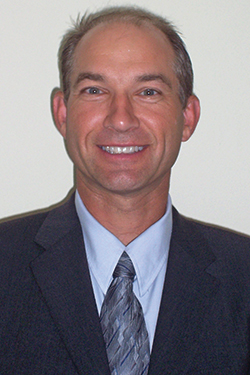Touring the Ag Lab

In January, I was able to participate, along with 15 other farm family members in a tour of the National Center for Agricultural Utilization Research, commonly called the Ag Lab. Most of you have probably driven past it many times on your way to work, shopping, or en route to a nearby town. It is located at the intersection of Interstate 74 and University Street in Peoria.
We were introduced to the new center director, Dr. Paul Sebesta, and listened to several research leaders talk about the projects they were working on at the lab, including mycotoxin research in corn, improving the efficiency of biofuels manufacturing and research into a variety of oilseed crops, such as pennycress and kophia. Plants that many in the farm community think of weeds, such as pennycress, may some day be used as productive energy crops for our economy.
Approximately 100 Ph.D. researchers support nine units in the scientific field. Even with all of this research for new, more efficient uses of agriculture commodities, the Ag Lab is much more. It is a “mini-factory” for much of the research being conducted. Researchers work with entrepreneurs and major companies in producing new products. Before large-scale plants are built, these “mini-factories” produce enough of a product to give it an adequate test market.
The Ag Lab has its roots in the Great Depression. In the late 1930s, there was a surplus of farm crops, as few people could afford to buy farm commodities, other than bumper crops. In order to utilize these surplus crops, Congress authorized the United States Department of Agriculture to build four regional research laboratories for the purpose of finding new uses and markets for farm commodities. Peoria was selected as the site for the Northern Regional Laboratory, with a focus on corn, wheat and agricultural waste products. (Soybeans, the No.2 crop in Illinois for decades, were not yet a major focus of farmers at that time.) Operations of the Ag Lab began December 16, 1940.
What are some of the products the Ag Lab is known for? Mass production of penicillin is probably the most well-known discovery. Although penicillin was actually discovered in Europe, the method for mass production was discovered at the Peoria lab. There was an urgency to do this, as World War II erupted and war casualties mounted. It could be that the timing of the D-Day invasion on the beaches of Normandy was to some extent tied to the availability of penicillin for the expected heavy casualties.
Xanthan gum is the thickening agent found in nearly every bottle of salad dressing and many other products on grocery shelves, such as Cool Whip, Wonder Bread and Plax mouthwash. It is also used to extend the life of gas and oil wells. A solution of water and xanthan gum is pumped into the earth to push out any remaining crude oil.
SuperSlurper is exactly what it sounds like. It is a superabsorbent made from corn starch capable of absorbing 2,000 times its weight. This technology is found in disposable baby diapers, napkins and bandages.
Oatrim is a fat replacer and nutraceutical. It is naturally credited with contributing to improved foods and greater health.
Ethanol and bioenergy research is an obvious benefit to the Peoria area and the Midwest. With ethanol at the forefront of reducing our dependence on foreign oil and creating cleaner air, researchers are looking for ways to make ethanol more efficiently.
If you get a chance to tour the ag lab, take advantage of the opportunity. It is a great asset to our community. iBi

